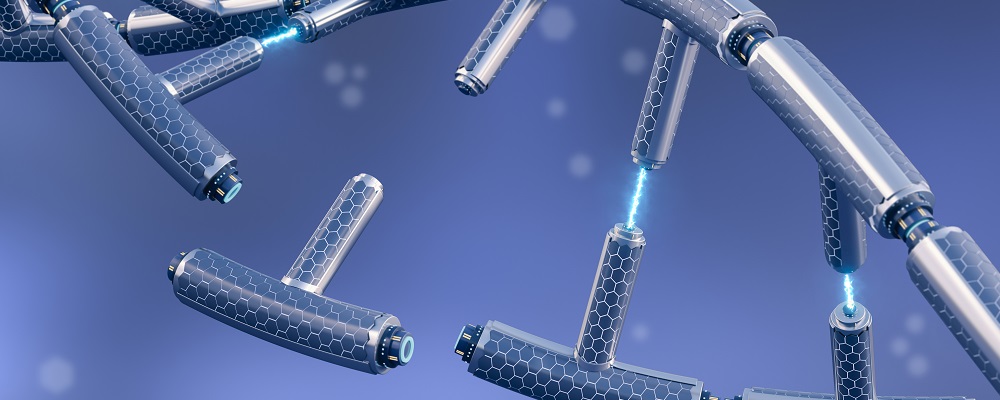


Restorative Medicine
Rogue DNA Fragments
Create genomic instability common in cancer

Published in Nature, the study reveals that when the enzyme Dna2 is absent, the genetic material of a cell becomes unstable and the DNA breaks.
While evaluating a key mechanism that assists in DNA repair, a team of researchers confirmed a key mechanism for disruptive DNA insertion. Baylor College of Medicine’s Grzegorz Ira, PhD, and Yang Yu, PhD, and Houston Methodist’s Kaifu Chen, PhD, and Bo Xia, PhD, collaborated with researchers from the University of Texas MD Anderson Cancer Center and Weill Cornell Medical College to make a discovery that led to publication in December 2018’s Nature. They found that when the mechanism—the enzyme Dna2—is absent, the genetic material of a cell, the genome, becomes unstable and results in breaks in DNA.
Picture the double helix of a DNA strand, then imagine both strands are broken and one of the tools that typically repairs it is missing. Now the cell is threatened. Without the Dna2 repair tool evaluated in this study, excess pieces of DNA produced during cell replication can insert themselves and alter the genome, often negatively impacting a cell. Inserted DNA fragments are often duplications of an existing DNA sequence that are released and subsequently integrated into areas of double strand DNA breaks. Importantly, DNA insertions also play a role in the mechanisms for antibody diversification, which can help protect humans from pathogens.

Keifu Chen, PhD, (left) and Bo Xia, PhD, collaborated with researchers from Baylor College of Medicine, the University of Texas MD Anderson Cancer Center and Weill Cornell Medical College when identifying the mechanism that disrupts DNA insertion.
Our analysis of yeast cells deficient in Dna2 led our research team to propose that Dna2 prevents DNA insertions into the genome, which helps protect against alteration of the genetic code. These implications relate to what occurs in cancer cells, but more information is needed to know if similar DNA insertions occur in malignant cells that show a Dna2 deficiency.

Kaifu Chen, PhD
Director of the Center for Bioinformatics and Computational Biology
Associate Professor of Cardiovascular Sciences
Center for Cardiovascular Regeneration
DeBakey Heart & Vascular Center
Houston Methodist
Chen and his team analyzed the significance of deleting Dna2 in yeast cells. The mutant, Dna2-deficient cells revealed frequent insertions of DNA fragments into breaks in DNA. Without Dna2 as a repair mechanism, the rogue DNA fragments can come from almost anywhere in the chromosome and insert themselves into the DNA break. This research may have significance on a larger scale, relating to cardiovascular medicine as well as cancer.
“It was recently shown that genomic insertions in hematopoietic stem cells–immature cells that can develop into all blood cell types, like white and red blood cells–may lead to clones that increase the white blood cell count and increase major adverse cardiovascular events,” said John Cooke, MD, PhD, Joseph C. “Rusty” Walter and Carole Walter Looke Presidential Distinguished Chair in Cardiovascular Disease Research.
Yu Y, Pham N, Xia B, Papusha A, Wang G, Yan Z, Peng G, Chen K & Ira G. Dna2 nuclease deficiency results in large and complex DNA insertions at chromosomal breaks. 2018, Nature, vol. 564, no. 7735, pp. 287-290. DOI: 10.1038/s41586-018-0769-8
Laura Niles, August 2019
Related Articles








